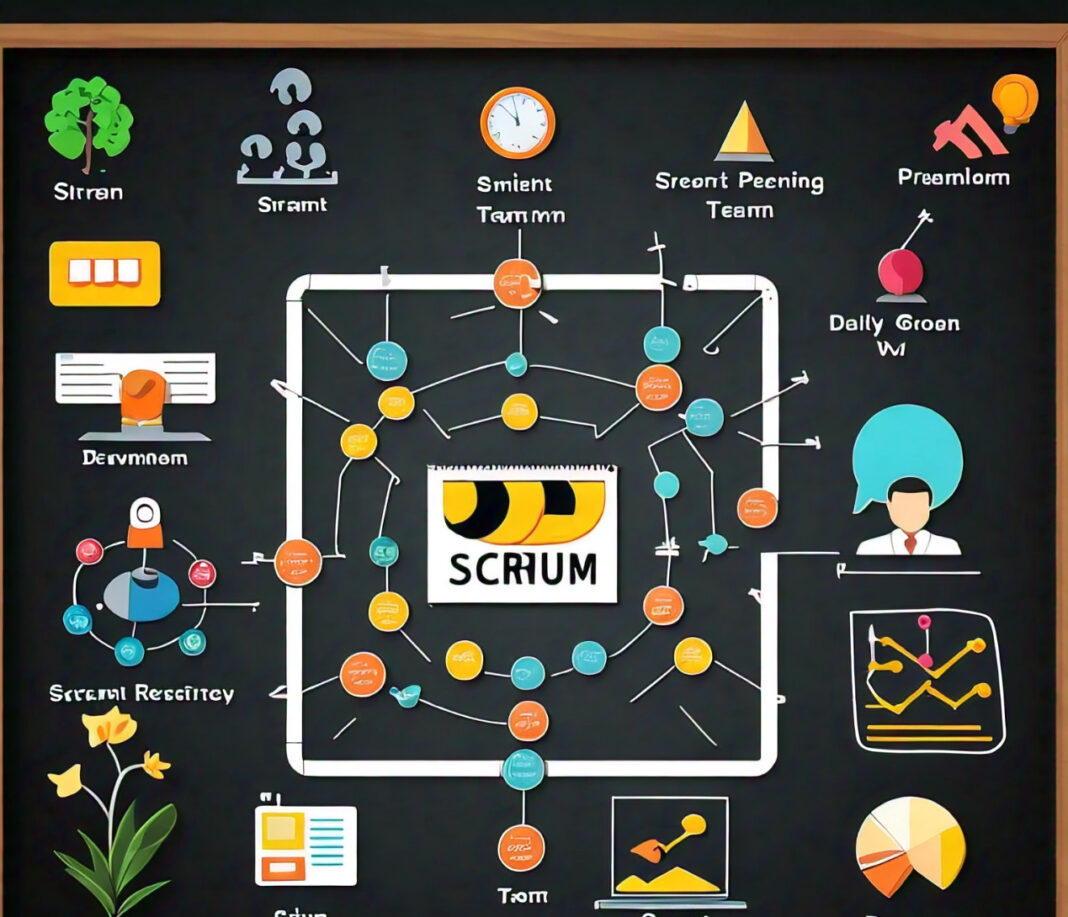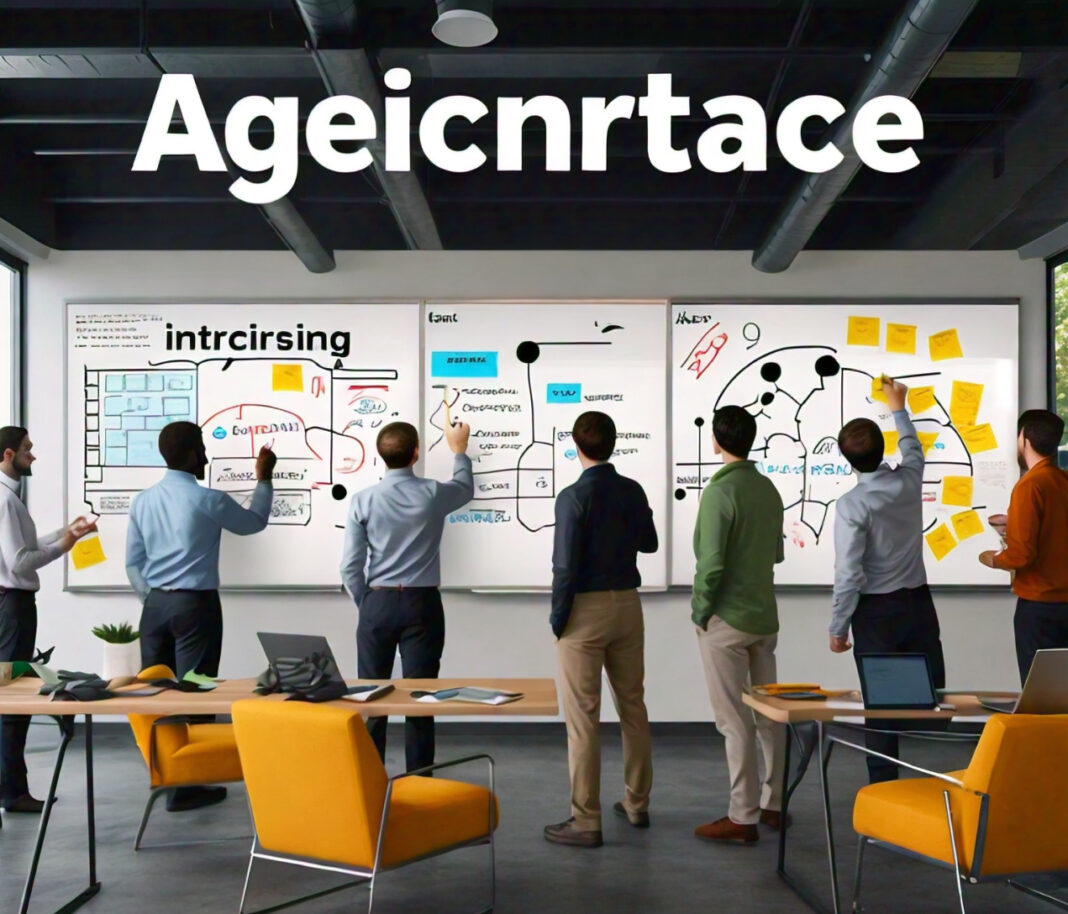Scrum is among the most commonly used Agile frameworks designed especially for teams to work effectively and efficiently in tandem with one another. First designed for software development, Scrum is now being used across various industries because its principles are versatile and focus on continuous improvement or adaptation. At its core, Scrum aligns around defined roles, ceremonies (meetings), and artifacts, which cohesively form a system for managing complicated projects.

Scrum Introduction
Scrum is an iterative and incremental approach to projects that increases the basic aspects of being collaborative, accountable, and making steady progress toward a clear goal. A structured yet flexible framework that allows a team to work through changes with a focus on value delivery. Work with Scrum is broken into small pieces so complexity is more easily managed, changes are adapted to, and a functional increment of a product is delivered regularly.
Scrum is based on the principles of transparency, inspection, and adaptation, right at the very core—the roles, ceremonies, and artifacts. Each piece of Scrum aims at bettering communication, a clearer definition of roles and responsibilities, and a feedback loop with continuous improvement.
### Scrum Roles
Scrum defines three primary roles, each with specific responsibilities: the Product Owner, the Scrum Master, and the Development Team. These roles frame a balanced structure that allows the project to remain aligned with business goals while enabling the team to work efficiently.
#### 1. **Product Owner**
The Product Owner is a key stakeholder representing the voice of the customer or end-user of the project. The said position is critical in moving the team towards the most valuable features upon which the product is streamlined with the rest of the business strategy.
– **Responsibilities**:
**Defining the Product Backlog**: The Product Owner is solely responsible for ordering and managing the Product Backlog. It is a prioritized list of features, enhancements, fixes, and other work required for developing the product. The Product Backlog is dynamic, continuously updating according to feedback, changing requirements, and progress by the team.
**Prioritizing the Backlog Items**: The product owner has to identify the important product backlog items that have more business value, customer needs, market trends, and technical dependencies, to deliver maximum value.
**Definition of Acceptance Criteria**: The Product Owner will provide clear acceptance criteria for each item in the Product Backlog. This defines what must be done according to the item for it to be considered done. These criteria help lead the Development Team in understanding what has been expected of them.
**Stakeholder Communication**: Throughout this role, the Product Owner serves as a bridge between the Development Team and stakeholders external to it. The latter is responsible for ensuring that the work carried out contributes to business purposes and is oriented to meet the expectations of customers. This will involve regular communication with stakeholders to collect feedback, report on the process, and make adjustments as required.
– **Skills**:
– Deep understanding of the market and needs of the customers.
– Wise, independent decision regarding priority.
Strong communication and negotiation skills to balance stakeholder expectations with team capability
#### 2. **Scrum Master**
This is the role of being responsible for aiding the Scrum process. She ensures that the team works following the Scrum principles and practices. This aspect is also often linked with the term “servant leader” as she focuses on removing the obstacles that obstruct the way and lets the team flourish.
– **Responsibilities:**
– **Facilitating Scrum Ceremonies**: The Scrum Master leads and facilitates Scrum ceremonies in a way that is functional and productive. This requires setting out the agenda, timely box management, and making sure that all who are expected to attend do so.
**Remove Impediments**: The Scrum Master should be actively identifying and removing impediments or obstacles that hamper the team’s performance. It can be from dealing with conflicts in the team to ensuring resources are in place.
– **Coaching the Team**: Helping the team understand and adopt Scrum practices would mean soliciting guidance and providing support on self-organization and cross-functionality of the team.
– **Protecting the Team**: Protecting the Development Team from external interferences and distractions so as not to influence the team’s working style and practice by disturbing them or diverting them from ongoing work.
– He is also encouraging the team always to look for continuous improvement, reflecting that regularly and adapting to always be more effective as a team.
– **Skills**:
– Excellent knowledge of Scrum principles and Agile methodologies.
– Excellent facilitation skills while coping with and resolving conflicts.
– Capable of establishing a cooperative and supportive environment.
#### 3. **Development Team**
The Development Team consists of professionals who work together to deliver a potentially shippable product increment at the end of each Sprint. Unlike other types of teams, such as traditional teams, Scrum Development Teams are cross-functional. This means they possess all the skills required to do the work without depending on other outside services.
– **Responsibilities**:
– **Deliverable Increments**: The Development Team’s most important responsibility is to develop, each Sprint, a product increment, potentially shippable, of high quality, meeting the acceptance criteria set by the Product Owner for the Product Backlog.
– **Self-Organizing**: The Development Team is self-organizing. They determine the best way to accomplish the work in the Sprint Backlog.
– **Collaborating and Communicating**: Adequate collaboration and communication within the team is very important. Team members closely work together, share knowledge, and support each other towards delivering the goal of the sprint.
– **Continual Improvement**: The Development Team is responsible for continually improving their processes and practices. They meet at frequent intervals, retrospect on their practices, and find ways to better their performance.
– **Skills**:
– Broad technical skills and expertise relevant to the project.
– Ability to work collaboratively in a self-organizing environment.
– Commitment to quality and continuous learning.
### Scrum Events
Scrum consists of several ceremonies or meetings that were developed to promote communication, collaboration, and continued progress. These ceremonies allow the team a structured way to plan, review, and reflect on their work.
#### 1. **Sprint Planning**
Sprint Planning, the first ceremony in the Scrum cycle, is a working session in which the team lays out the work for the upcoming sprint. Generally, this meeting includes the entire Scrum Team: Product Owner, Scrum Master, and Development Team, and sets the tone for the Sprint.
What is the aim of Sprint Planning? To describe the Sprint Goal and determine the set of Product Backlog items on which the Scrum Team will work during the Sprint. It ensures that the Sprint Goal is clear and the chosen Product Backlog items are constructed to form the Sprint Backlog: it is the plan for the Sprint.
• **What can be done?** The team collaborates with the Product Owner on Product Backlog items containing requirements and priorities of the Product Backlog items, in addition to the acceptance criteria. The team then clarifies and identifies that which can be done practically during the Sprint, considering their capacity to do it and any potential risks.
– **How is the work going to be done?**: After the selection of Product Backlog items, the Development Team delineates each selected item to determine how it intends to deliver them. This encompasses the decomposition of chosen Product Backlog items into smaller tasks, estimating the effort involved, and organizing the tasks into a doable work plan.
– **Outcome**: A Sprint Backlog, in which work is further specified in terms of the chosen first elements of Product Backlog items, an expected outcome of work, and a goal, all of which help to guide the team’s work.
#### 2. **Daily Scrum**
Daily Scrum is a daily time-boxed event for the Development Team members to synchronize their plans for the next 24 hours where the Development Team makes a plan on how to work towards the Sprint Goal for the next 24-hour increment.
– ** Objective**: The Daily Scrum makes the team able to inspect their progress in attaining the Sprint Goal. They can check how far they are off track from getting the Sprint Goal achieved and formulate the right plans for the next 24 hours. It instills transparency and quick, efficient communication between the members of a team.
– **What is the process**:
– Each team member answers three questions:
1. **What did I do yesterday?**: What the team member has been up to since the last Daily Scrum.
2. **What will I do today?**: What the developer plans to do today toward the team’s goal.
3. **Are there any impediments?**: What’s holding me back from attaining the goal and getting in the way of work being done?
– **Outcome**: The Daily Scrum ensures that the Team is aligned throughout the Sprint and facilitates any disturbance or hitch to be addressed promptly. It also keeps the subroutine of accountability and shared responsibility.
#### 3. **Sprint Review**
Sprint Review is at the end of a Sprint. It allows the whole team to showcase the work accomplished in that Sprint. The meeting can involve the Scrum Team as well as relevant stakeholders.
** Purpose**: The Sprint Review is held at the end of the Sprint to inspect the increment and to receive feedback about the increment from the Stakeholders. It’s an opportunity for the team to show the stakeholders what they have been able to complete, talk about what problems they encountered, and receive input that may impact the following Sprints.
** Process**:
– **Increment Review**: The Development Team shows the work they have managed to complete so far; they show the working product features and any refinements that have been developed in the last sprint. It is normally described as a live demonstration or as a walk-through.
– **Feedback and Discussion**: Stakeholders provide feedback on the increment, discuss the possibility of any change, and if the product is going along well. The Product Owner does the update of the Product Backlog considering any of these factors.
– **Outcome**: The Sprint Review results in a shared understanding of what was accomplished during the Sprint and valuable feedback that informs future work. It also helps align the team and stakeholders on the product’s direction.
#### 4. **Sprint Retrospective**
It is the last meeting within one Sprint, after the Sprint Review, and before the next Sprint Planning. The purpose of the Sprint Retrospective meeting is to reflect on the previous Sprint.
**Purpose**: The Sprint Retrospective focuses on team processes, collaboration, and overall effectiveness. The main goal of the meeting is to reflect on a sprint—one thing that was well accomplished and one that could be improved.






